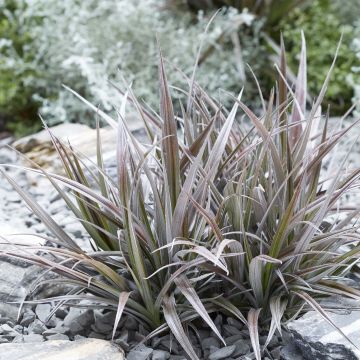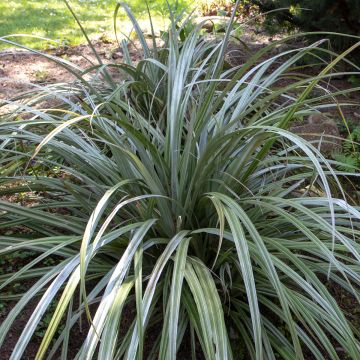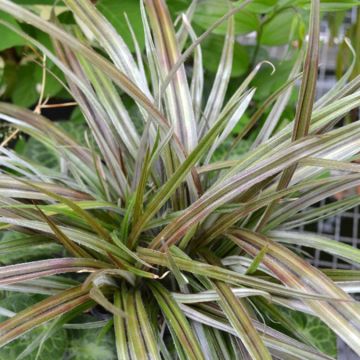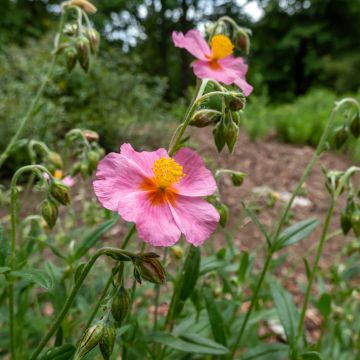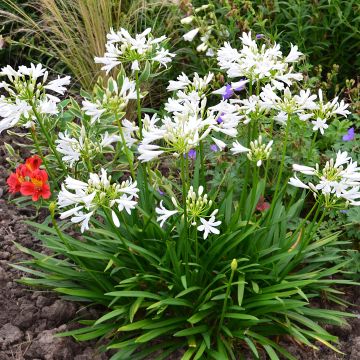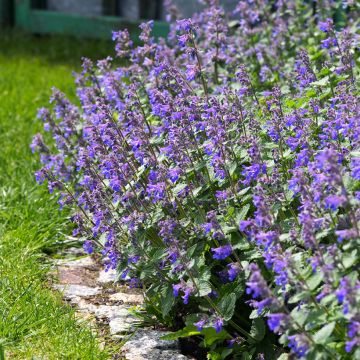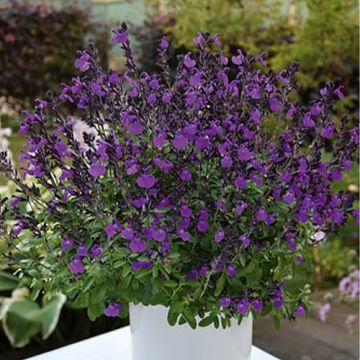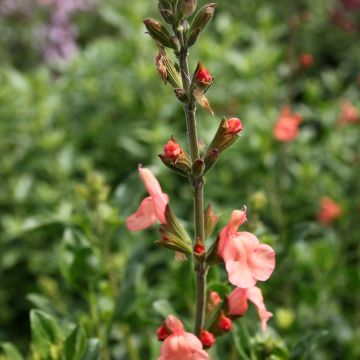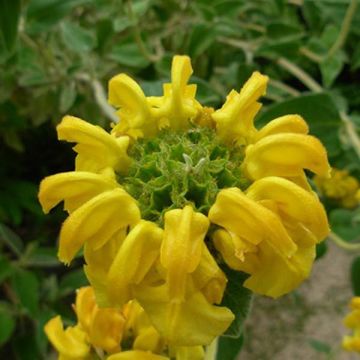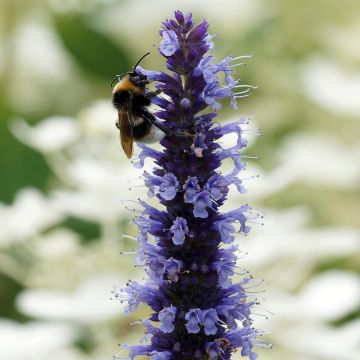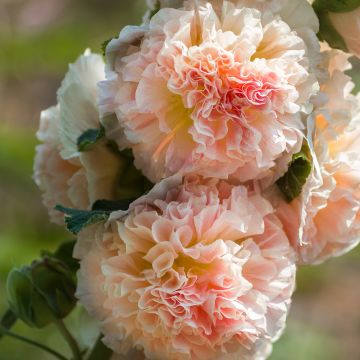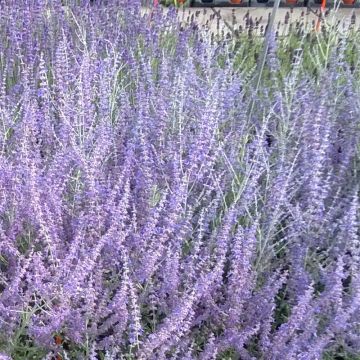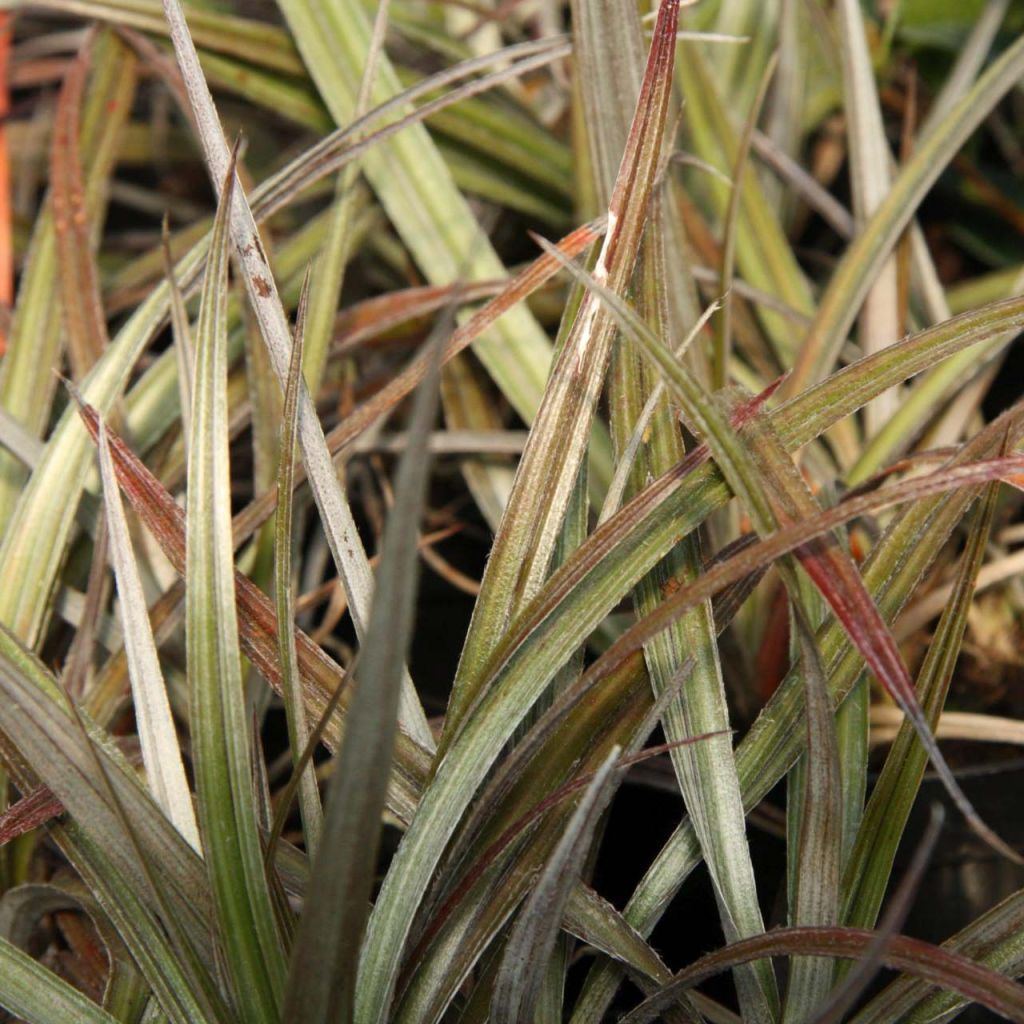

Astelia Red devil
Astelia nivicola Red Devil
Astelia nivicola Red devil ®
Astelia
This item cannot be shipped to the selected country
Delivery charge from €5.90
More information
Schedule delivery date,
and select date in basket
This plant carries a 12 months recovery warranty
More information
We guarantee the quality of our plants for a full growing cycle, and will replace at our expense any plant that fails to recover under normal climatic and planting conditions.
From €5.90 for pickup delivery and €6.90 for home delivery
Express home delivery from €8.90.
Does this plant fit my garden?
Set up your Plantfit profile →
Description
The Astelia nivicola 'Red Devil' is an architectural perennial plant that resembles a small phormium in its habit and will appreciate similar growing conditions. This horticultural selection stands out for its purple-tinged foliage, especially at the tips of the leaves, a colour that intensifies in winter due to the cold. Its broad linear leaves are slightly trailing and completely covered in bristles that play with the light. This evergreen plant is a marvel with its own requirements: it prefers acidic to neutral soils, stays moist in summer, and dislikes severe frost. Beautiful in many gardens, it will also be a centrepiece when planted in a pot on the patio during the warmer seasons in colder regions.
According to classification, the Astelia nivicola belongs to the Asteliaceae family, or the Liliaceae family. It is a botanical species endemic to the South Island of New Zealand. It grows in high-altitude wet meadows where snow is expected in winter. Like other astelias, male and female flowers are borne on separate plants (dioecious). The specific epithet "nivicola" comes from the Latin words "nivi" or "nivos", meaning "snow", and "cola", meaning "inhabitant", about the natural habitat of this plant.
'Red Devil', remarkable for its purple-coloured foliage, was selected by Kaikoura Nurseries in New Zealand and introduced to the United States in 2010. This rhizomatous perennial grows in a dense clump and does not spread. It has an upright and arching habit, reaching about 50 cm (20in) in all directions, depending on growing conditions. Its long leaves are covered in bristles on the top and have a velvety texture on the underside. The leaves, which are very long and 5 cm (2in) wide, slightly stiff, slightly arching, and pointed at their tips, show a more green-grey colour at the base and centre of the clump but violet-purple at their tips. The numerous bristles enhance the colour of the lamina, giving the overall appearance of various shades of plum, bronze, grey, almond green, and iridescent in the sunlight. Flowering stems, rarely seen in cultivation, appear in spring, depending on the climate. They bear inconspicuous but fragrant brown flowers, followed by the formation of small fruits on female plants, which are drupes of bright orange colour. Its relatively underdeveloped root system allows it to adapt well to container cultivation.
With its purple foliage, thisAstelia 'Red Devil' makes an excellent contrast to the beautifully silvered Astelia 'Silver Shadow'. It is a plant suited for borders or rockeries, preferably in mild oceanic climates. Indeed, it dislikes the heat and prolonged drought of Mediterranean summers and calcareous soils when planted in the ground. Used as a specimen plant or planted in groups, Astelia structures the space and gives the garden an exotic charm. In colder regions, it will thrive in a large pot on the terrace or balcony, allowing for admiration of its presence during the warmer seasons and allowing it to overwinter frost-free in a cold greenhouse or a minimally heated conservatory. For example, it can be paired with heucheras, hellebores, or astrantias with pink flowers. In a more exotic setting, consider Helichrysum rosmarinifolium 'Silver Jubilee', Pittosporum tenuifolium Tom Thumb, or Olearia macrodonta 'Major', which are also plants from Oceania, perfect like Astelia for coastal areas. Like tall grasses, it is also an excellent perennial for a modern garden with clean lines: a clump of Muhlenbergia capillaris, a true pink cloud at the end of summer, or Eragrostis trichodes Summer Strain, resembling a golden to coppery mist, should be combined with this Astelia for a trio of great beauty.
Report an error about the product description
Astelia nivicola Red Devil in pictures
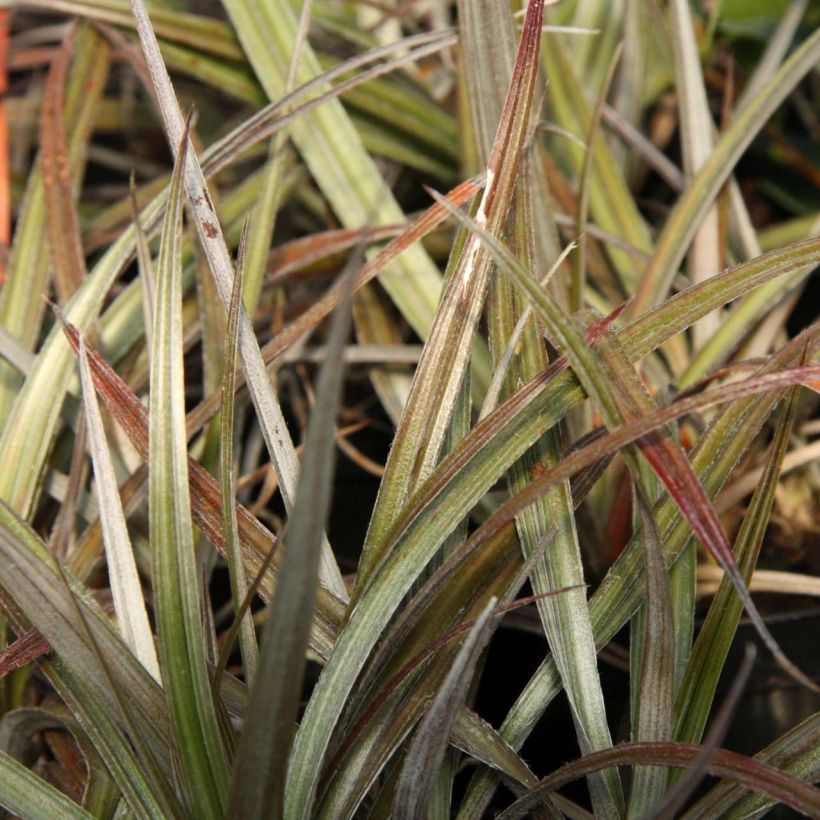

Flowering
Foliage
Plant habit
Botanical data
Astelia
nivicola
Red devil ®
Asteliaceae (Liliaceae)
Astelia
Cultivar or hybrid
Other Astelia
Planting and care
The Astelia 'Red Devil' is a hardy plant that will mainly be grown in open ground in regions where frosts do not drop below -7°C (19.4°F) for short periods. Everywhere else, pot cultivation is more suitable, allowing control over the nature of the substrate, watering, and winter protection from frost in a cool and bright room.
Plant your Astelia in a container or large pot with the bottom filled with gravel, broken pottery shards, or clay balls. The mix it is planted in should be fertile and well-draining (1/3 leaf compost, 1/3 compost, and 1/3 heather soil enriched with a handful of bonemeal).
Place the plant in full sun if you live in a less sunny region, preferably in partial shade, which it greatly appreciates. Water during growth, preferably with non-calcareous water, ensures the soil never completely dries out. Feed the plant with "special green plant" fertiliser diluted in water once a month. In winter, reduce watering and fertilising and let the soil dry superficially between two waterings.
In regions with a mild climate and light frosts, plant the Astelia in open ground in full sun in a very well-draining soil that is free of limestone and reasonably fertile.
In summer, make sure the plant doesn't lack water. In winter, it can rely on rainwater.
In case of severe frost, apply thick mulch around the plant's base and cover it with horticultural fleece.
Planting period
Intended location
Care
This item has not been reviewed yet - be the first to leave a review about it.
Mediterranean perennials
Haven't found what you were looking for?
Hardiness is the lowest winter temperature a plant can endure without suffering serious damage or even dying. However, hardiness is affected by location (a sheltered area, such as a patio), protection (winter cover) and soil type (hardiness is improved by well-drained soil).

Photo Sharing Terms & Conditions
In order to encourage gardeners to interact and share their experiences, Promesse de fleurs offers various media enabling content to be uploaded onto its Site - in particular via the ‘Photo sharing’ module.
The User agrees to refrain from:
- Posting any content that is illegal, prejudicial, insulting, racist, inciteful to hatred, revisionist, contrary to public decency, that infringes on privacy or on the privacy rights of third parties, in particular the publicity rights of persons and goods, intellectual property rights, or the right to privacy.
- Submitting content on behalf of a third party;
- Impersonate the identity of a third party and/or publish any personal information about a third party;
In general, the User undertakes to refrain from any unethical behaviour.
All Content (in particular text, comments, files, images, photos, videos, creative works, etc.), which may be subject to property or intellectual property rights, image or other private rights, shall remain the property of the User, subject to the limited rights granted by the terms of the licence granted by Promesse de fleurs as stated below. Users are at liberty to publish or not to publish such Content on the Site, notably via the ‘Photo Sharing’ facility, and accept that this Content shall be made public and freely accessible, notably on the Internet.
Users further acknowledge, undertake to have ,and guarantee that they hold all necessary rights and permissions to publish such material on the Site, in particular with regard to the legislation in force pertaining to any privacy, property, intellectual property, image, or contractual rights, or rights of any other nature. By publishing such Content on the Site, Users acknowledge accepting full liability as publishers of the Content within the meaning of the law, and grant Promesse de fleurs, free of charge, an inclusive, worldwide licence for the said Content for the entire duration of its publication, including all reproduction, representation, up/downloading, displaying, performing, transmission, and storage rights.
Users also grant permission for their name to be linked to the Content and accept that this link may not always be made available.
By engaging in posting material, Users consent to their Content becoming automatically accessible on the Internet, in particular on other sites and/or blogs and/or web pages of the Promesse de fleurs site, including in particular social pages and the Promesse de fleurs catalogue.
Users may secure the removal of entrusted content free of charge by issuing a simple request via our contact form.
The flowering period indicated on our website applies to countries and regions located in USDA zone 8 (France, the United Kingdom, Ireland, the Netherlands, etc.)
It will vary according to where you live:
- In zones 9 to 10 (Italy, Spain, Greece, etc.), flowering will occur about 2 to 4 weeks earlier.
- In zones 6 to 7 (Germany, Poland, Slovenia, and lower mountainous regions), flowering will be delayed by 2 to 3 weeks.
- In zone 5 (Central Europe, Scandinavia), blooming will be delayed by 3 to 5 weeks.
In temperate climates, pruning of spring-flowering shrubs (forsythia, spireas, etc.) should be done just after flowering.
Pruning of summer-flowering shrubs (Indian Lilac, Perovskia, etc.) can be done in winter or spring.
In cold regions as well as with frost-sensitive plants, avoid pruning too early when severe frosts may still occur.
The planting period indicated on our website applies to countries and regions located in USDA zone 8 (France, United Kingdom, Ireland, Netherlands).
It will vary according to where you live:
- In Mediterranean zones (Marseille, Madrid, Milan, etc.), autumn and winter are the best planting periods.
- In continental zones (Strasbourg, Munich, Vienna, etc.), delay planting by 2 to 3 weeks in spring and bring it forward by 2 to 4 weeks in autumn.
- In mountainous regions (the Alps, Pyrenees, Carpathians, etc.), it is best to plant in late spring (May-June) or late summer (August-September).
The harvesting period indicated on our website applies to countries and regions in USDA zone 8 (France, England, Ireland, the Netherlands).
In colder areas (Scandinavia, Poland, Austria...) fruit and vegetable harvests are likely to be delayed by 3-4 weeks.
In warmer areas (Italy, Spain, Greece, etc.), harvesting will probably take place earlier, depending on weather conditions.
The sowing periods indicated on our website apply to countries and regions within USDA Zone 8 (France, UK, Ireland, Netherlands).
In colder areas (Scandinavia, Poland, Austria...), delay any outdoor sowing by 3-4 weeks, or sow under glass.
In warmer climes (Italy, Spain, Greece, etc.), bring outdoor sowing forward by a few weeks.

































